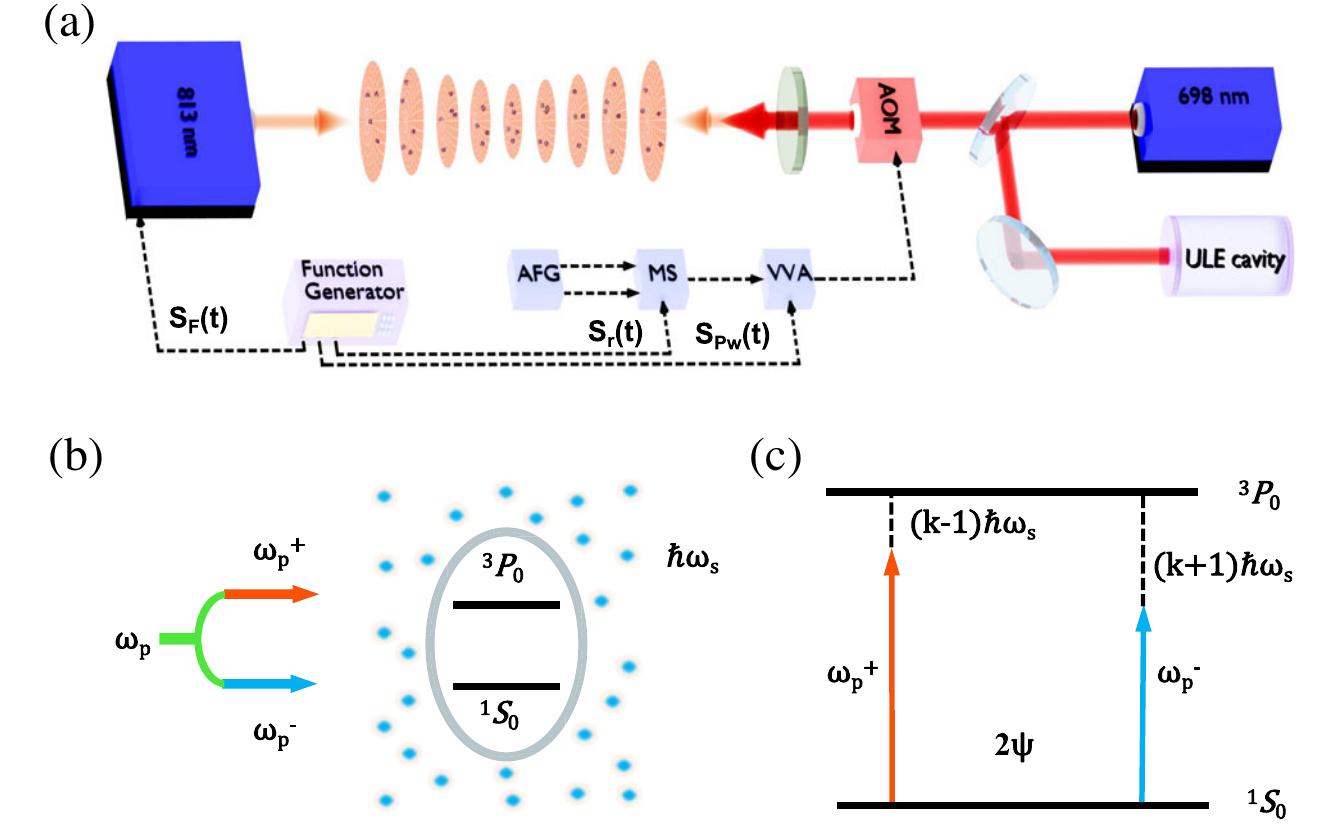
Based on the strontium optical lattice clock platform, a research team led by Prof. CHANG Hong from the National Time Service Center of the Chinese Academy of Sciences, together with ZHANG Xuefeng from Chongqing University observed the interference effect between Floquet quasi-particles. Relevant results were published in Physical Review Letters.
According to Floquet Theory, when a quantum system is driven periodically, Floquet quasiparticle excitations occur. When two modes are driven simultaneously, the relative phase may lead to the interference effect between Floquet quasi-particles, and the application of the interference effect will be of great value for quantum precision measurement.
"Benefiting from ultra-high frequency measurement precision, the strontium optical lattice clock developed by the National Time Service Center has the experimental conditions to observe the interference effect of Fouquet quasi particles," said Prof. CHANG.
The researchers trapped strontium atoms in a lattice. The two-level atom was surrounded by Floquet quasiparticles by modulating the lattice light frequency, which could assist the transition. When the coupling strength of the clock laser to the atoms was modulated, different number of Floquet particles could be selected to assist the transition.
There was a certain phase difference between the two transition processes, resulting in interference effect. The interference effect was observed by precise measurement of the clock transition spectrum of the Strontium atoms.
In the experiment, the Hamiltonian described the system corresponds to the Su-Schrieffer-Heeger (SSH) model of long-range interaction, so that the one-dimensional topological insulator with high topological number can be well simulated.
The time and frequency measurement based on optical lattice clock has become the most accurate basic physical quantity at present. The research of strontium optical lattice clock in China has always been in the status of "keeping pace" for a long time, far behind the technicalities led by other countries. The research team of the National Time Service Center broke the closed-loop of strontium optical lattice clock in 2017, and achieved the breakthrough of E-18 level of frequency stability in 2019.

Fig. Schematic picture of experiment setup and interference. (Image by NTSC)

86-10-68597521 (day)
86-10-68597289 (night)

52 Sanlihe Rd., Xicheng District,
Beijing, China (100864)

